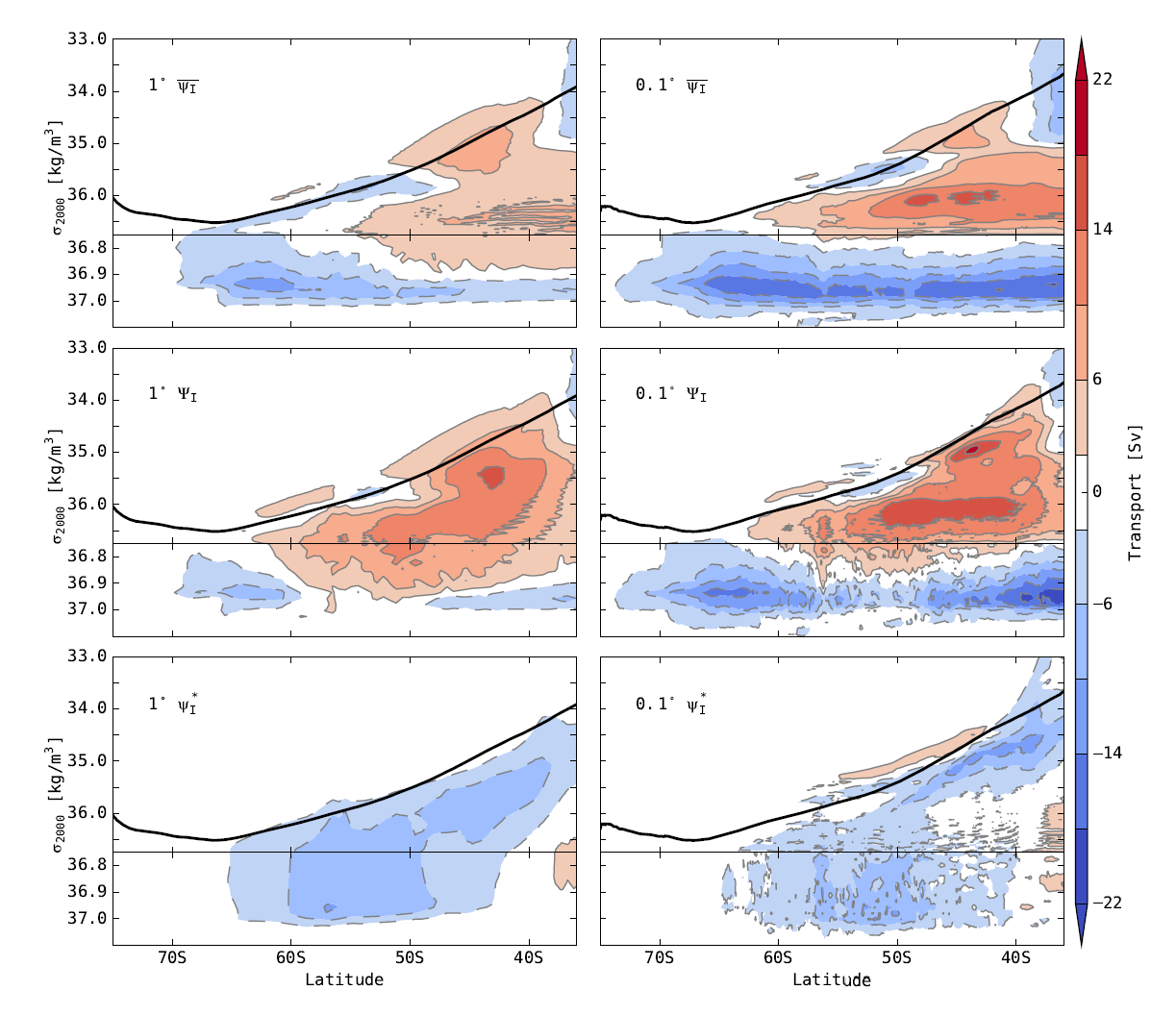by ice2ice Phd Mads Bruun Poulsen
Markus, Roman and I recently published a paper in Ocean Modelling (which can be found here: https://doi.org/10.1016/j.ocemod.2018.01.008) about the representation of the Southern Ocean in climate models. Here is a short summary of our study as well as our take on how this piece fits into the ice2ice puzzle.
The schematic shown in Figure 1 places the Southern Ocean at the center stage in the modern view of the large-scale ocean circulation. Not only does it allow for an exchange of properties between the three major ocean basins via the Antarctic Circumpolar Current (ACC), it is also a key region of wind-driven upwelling due to persistent overlying westerlies and hence provides closure for the meridional overturning circulation. From a present-day perspective, these properties of the Southern Ocean are important to oceanic uptake of anthropogenic heat and carbon dioxide, as well as the oceanic poleward heat transport.

The issue with the representation of the Southern Ocean in ocean general circulation models (OGCMs) is that mesoscale eddies (Figure 2), a vital component to the dynamical balance that prevails in the Southern Ocean, evolve on a spatial length scale which is smaller than the typical ‘coarse’ horizontal grid resolution in commonly-used climate models (about 1 deg. X 1 deg.). That is, the effect of eddies on the large-scale ocean circulation is not present unless we parameterize it in the model. This problem has a long history in the oceanographic literature, and how to parameterize the effects in practice is still hotly debated. The vastness and remoteness of the Southern Ocean means that we do not have a reliable observational constraint on what it is that we attempt to parameterize, but a considerable amount of theoretical and modelling studies have given us a reasonable idea about what properties such parameterization needs to fulfill.

In our study we decided to compare a commonly used climate model, with an implemented eddy parameterization, to a high-resolution version of the same model, with explicitly resolved eddies, to examine how well the coarse resolution model mimics the physics. A forward integration of a global eddy-resolving OGCM is a demanding computational task why this study was only made possible through granted computer time at the supercomputer in Jülich, Germany, and support from the NBI e-science section. Using 4096 cores of the IBM BlueGene, the experiments generated about one Petabyte model output, required a continuous data transfer of about one Terabyte pr. day and took three years to complete.
Perhaps the most important eddy effect in the Southern Ocean is that eddies drive an overturning circulation of opposite sign to the one set by the winds alone i.e. it compensates the wind-driven upwelling of water. To keep it short, we found that the coarse resolution model distributes the eddy-circulation differently across water masses compared to the high-resolution model, which imply that the eddy compensation is different between the models (Figure 3). We also found that the total southward heat transport in the Southern Ocean compares well between the models, but that the heat transported by the eddy field alone is different. These two results indicate that there is room for improvement in the formulated eddy parameterization.

This is all fine, you may say, but why is this relevant to the ice2ice community? A satisfactory theory for global-scale abrupt climate change, such as D-O events, has to explain how the northern and southern hemisphere exchange information in order to arrive at the d18O signals that we find in the ice cores from Greenland and Antarctica. If the information of climate change between the hemispheres is transmitted through the ocean, the climate signal has to cross the ACC. Here models often struggle, which either tell us that the signal does not transmit through the ocean or that it does but the relevant physical processes are not well represented in the models. A substantial amount of heat is fluxed poleward across the ACC by mesoscale eddies, which our study indicates is distributed wrongly in the coarse resolution model. If eddies do play a role in transmitting the climate signal, a better mesoscale eddy parameterization might be needed to obtain the correct response in OGCMs.